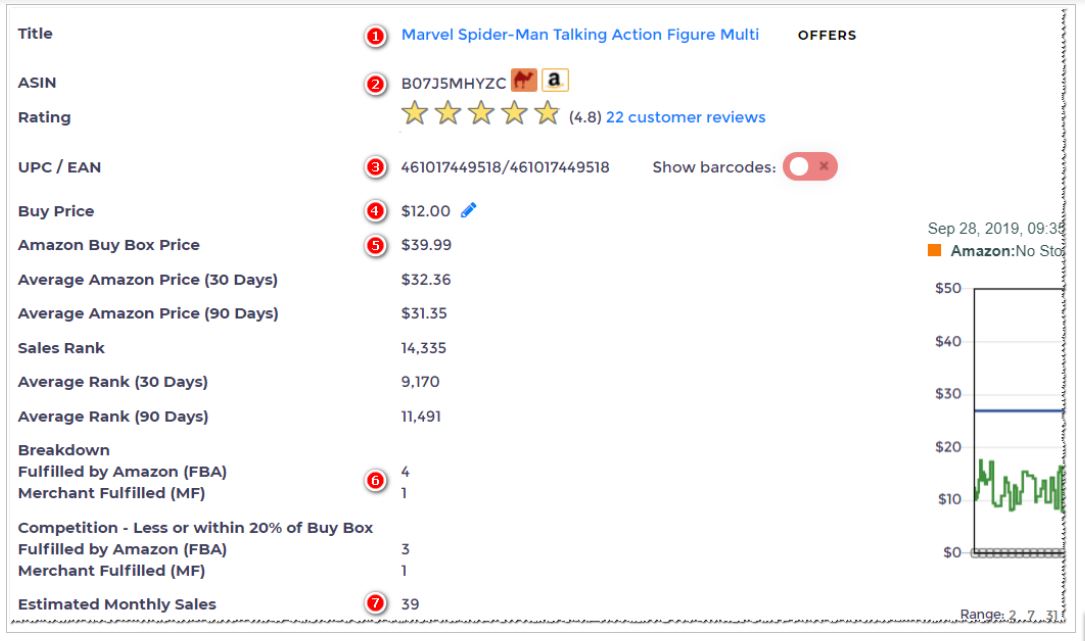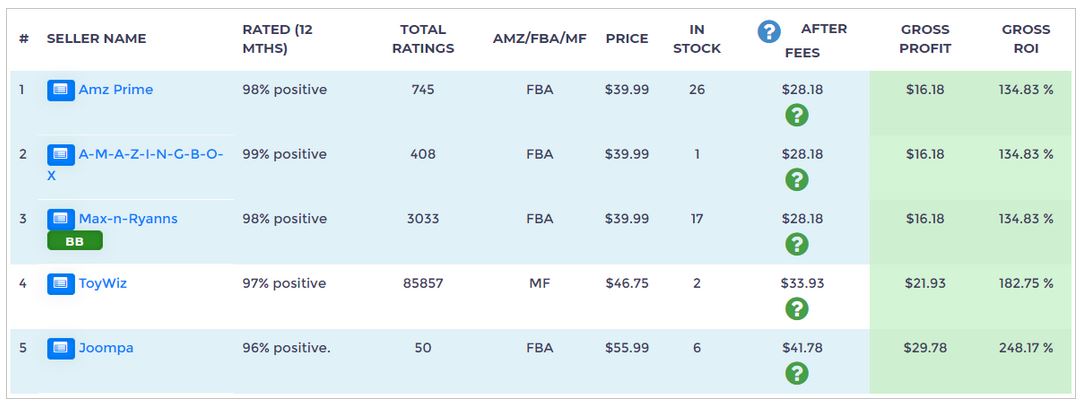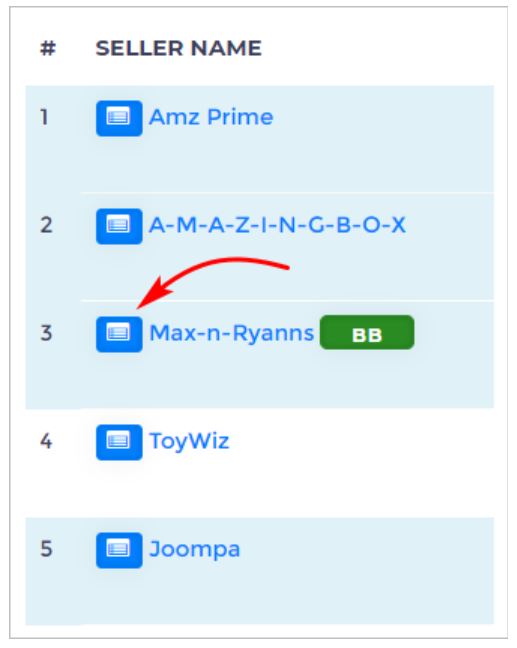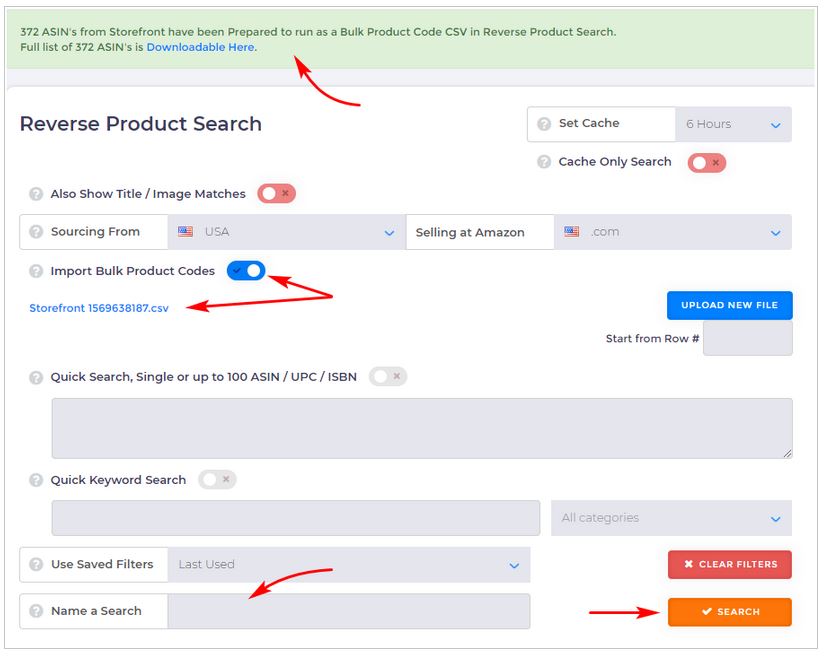As sellers on Amazon, we are always looking for an edge that puts us above the competition. I know I have my secret spots I source, relationships I have built, and even tools that I have that help me find flipping opportunities.
Without these advantages, I would still be scanning everything in a clearance aisle and I would barely be making a profit.
Although I typically keep my advantages to myself, I have decided to tell you a little more about one of my favorite tools Tactical Edge. Tactical Edge is a part of Tactical Arbitrage and it is my way to get inside the heads of other sellers and competitors.
You might be wondering…Why would I want to get inside the head of my competition? It’s simple. I want to use other’s knowledge to become a better and smarter seller. Think about it.
If I had a product that is making me a lot of money and someone else hops onto the listing, wouldn’t I want to know what they are selling? Wouldn’t I want to know how many units they still have in stock?
All this information is extremely valuable and can help make me money and can help stop me from making poor purchasing decisions.
So in this article, I’m going to walk you through using Tactical Edge. If you don’t have it, you might want to get it now so you can follow along and start learning (and earning today). You can get here.
By the end of this article, you’ll know how to:
- Locate and activate Tactical Edge
- Read the analysis charts to understand the competition
- Select data to develop your own strategy
- Run a Reverse Search
Let’s get started.
Using Tactical Edge
To get started, you need to actually know how to find the Tactical Edge Tool within Tactical Arbitrage. There are three easy ways to find the tool including the dashboard, the main menu, and the view data pages.
I personally just scroll down on the dashboard to find the Tactical Edge toolbar near the bottom of the page (there is a picture below of what it looks like), but you can access the tool any way you like.

Once you find Tactical Edge, the next step is to actually put in the information you want to search*. In this case, you will need two pieces of information: the ASIN of the product you want to sell and the price at which you can buy the product (aka your buy price).
Once you put in the information, you just simply hit search and Tactical Arbitrage does the rest.
*Note: Accessing Tactical Edge from the View Data page is different. The ASIN and price information are already on the View Data page. There is nothing new to add. Just click the microscope to open the analysis page.)
Understanding The Data


With a quick look at the analysis page, a lot of people might get information overload. To a trained eye, you see a bunch of extremely important data points that can give you that edge above your competition.
Let’s take a look at a few data points I love to use.
- ASIN & Reviews – Before I buy anything to flip on Amazon, I have to make sure that the product has solid reviews. I don’t want to buy something that has a strong likelihood of being returned. This is just a check on my list, but it has stopped me from buying items that suck.
- Breakdown & Competition – This shows the number of FBA and MF sellers. And also the number of FBA and MF sellers within a certain % range of the Buy Box. I love this information because it let’s me know how many people I will be competing against. I personally like to buy items that have few FBA sellers (I don’t mind some MF sellers as FBA usually always gets the buy box).
- Estimated Sales – One of the biggest questions I get is “how many of an item should I buy?” Estimated sales gives me this information and allows me to project how many units I should be to cover my first month of sales.
- Seller Name – This is my favorite piece of information, but more on that in a bit when we talk about reverse searches.
- In Stock – Nothing is better than knowing a competitor is going to go out of stock of an item soon. It gives you the ability to set the price higher and wait for the other seller to sell out.
Developing a Strategy
Having data is one thing, but the real power is using it to make educated business decisions. I can’t tell how to make purchasing decisions, but I can tell you how I use this data to help bolster my business.
Here are a series of questions that can be asked (and answered with the data) above:
- Is it wise to come in with a lower sell price when the current Buy Box holder may soon be out of stock? You can check this with the “in stock” number. If it is low, you can then take a look at the estimated sales and connect the dots to see the estimated timeframe at which your products might sell.
- How does the monthly sales figure compare to in stock quantities held by the top 2 or 3 top sellers? What kind of turnover rate might you be looking at? Could you realistically price higher based on the diminishing stock levels of those priced lower? These are powerful questions that can change your pricing methods and possibly increase your profit level.
- How many of a product should I buy when I find a great flip opportunity? Well, take the estimated monthly sales and you can buy a month or two of inventory. Even better, you can take a look at the number of sellers on that product and try to estimate your level of sales.
Running a Reverse Search
And now to my favorite use for Tactical Edge. Have you read the Art of War? It’s a classic book that has helped many to learn to think strategically.
I actually listened to it in the car (via audiobook) driving back and forth to work.
One lesson that Sun Sui teaches is that one should turn an enemy’s strength into a weakness. Those who do will have an advantage.
So how do we do that? Well we use the data and another tool in the Tactical Arbitrage toolbox. That tool is called Reverse Search. This tool goes to your competitors Amazon storefront, grabs all the ASINs, and then does a reserve search to see if there are any profitable deals for you.
Here’s how it works.
Selecting a Competitor
- Go to the bottom panel on the Tactical Edge analysis page.
- Select the seller you want to research.
- Click the blue box icon next to the seller name. A reverse search page displays in a new tab.

Setting Up The Reverse Search
With the research search panel, you might be a little overwhelmed. It looks like this:

Don’t let all the buttons and options fool you. It’s pretty straight forward, When you’re ready to start, you just need to do two steps.
- Enter a search name (optional).
- Click SEARCH.
And the search begins.
Analyzing the Results
Once the search is over, click View Data to review the results. Here is where you get to do your magic. Take a look over the different product ideas and see what might be a good purchase.
If you don’t know what to do, you might want to check out this post.
Final Thoughts
In any business, gaining a competitive advantage is what allows you to set yourself apart from your competition. In the world of Amazon selling, the best tool to gain a competitive advantage is Tactical Edge.
It gives you insights into your products and insights into your competitors.
I hope this article has shined some light on one of the awesome tools that is a part of Tactical Arbitrage. Make sure to give Tactical Edge a try the next time you are doing some online arbitrage.

